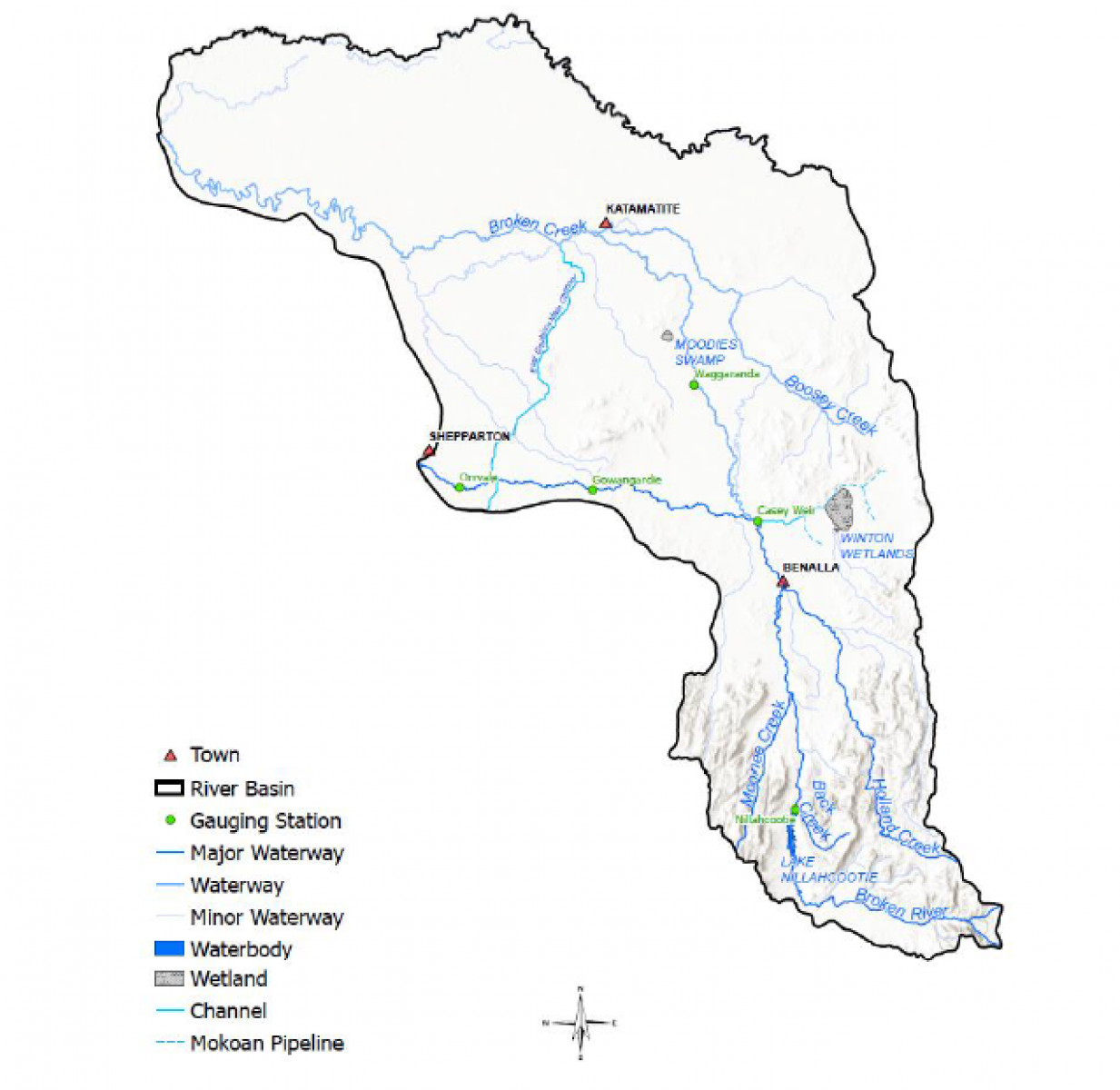On this page:
Broken Reconfiguration Feasibility Study
The Broken Reconfiguration Feasibility Study (BRFS) was a community-led initiative. The BRFS project was led by the Department of Energy, Environment and Climate Action (DEECA) and Goulburn Murray Water (GMW).
The study explored system reconfiguration options for the Broken River. The reconfiguration options support community planning for reduced water availability in the future.
The BRFS commenced in early 2023. It was supported by a Consultative Committee which included representation from seven community members appointed through an Expression of Interest process.
DEECA and GMW worked closely with representatives from:
- Goulburn-Broken Catchment Management Authority (GBCMA)
- Victorian Environmental Water Holder (VEWH)
- Benalla Rural City Council
- Greater Shepparton City Council
- Victorian Farmers Federation.
A wide range of online and face-to-face engagement was also undertaken to gather broader community insights.
Map of the Broken River Catchment Area

The BRFS’s goal was to identify and assess feasible options for reconfiguring the Broken System. Reconfiguration options were tested with the community. Options tested were evaluated based on success criteria developed in conjunction with the Consultative Committee. Including:
- achieving multiple benefits
- creating change
- being future ready
- having community acceptance
- value for money.
Business case
The BRFS recommended progressing this community led initiative to business case development. Funding for the business case has been secured through the Commonwealth’s Resilient Rivers Water Infrastructure Program, as part of our Planning our Basin future together program. This marks an important step to a more resilient and sustainable Broken River System.
The business case is now underway and will be delivered by the Resilient Water Program, a division of Goulburn Murray Water. The business case will refine the preferred option and finalise the scope of works.
This will include consultation with property owners to understand their specific needs and preferences. The success of the project will depend on the participation of Broken System customers in the business case development process.
A newly formed Consultative Committee is supporting the project through the business case. For more information about the Broken Reconfiguration Project business case visit Goulburn Murray Water’s website.
Page last updated: 04/09/25
